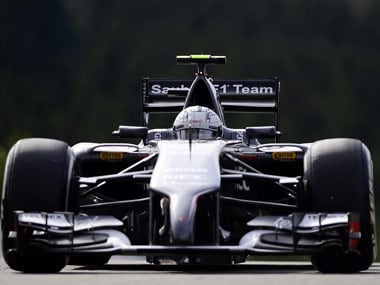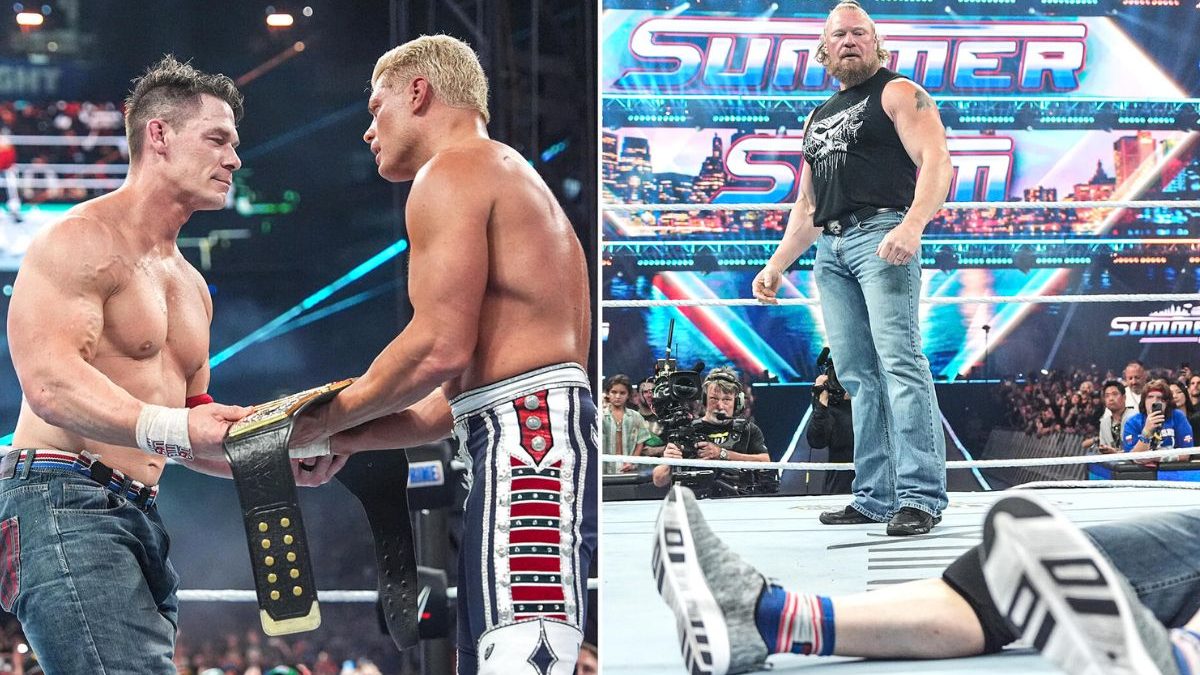Even as the engines were being fired up ahead of practice for the Australian Grand Prix, the hammering of a judge’s gavel echoing in a Melbourne courtroom threatened to drown out the first official track action of the season. Not for the first time in the dysfunctional world of Formula One, the racing was at risk of becoming a casualty to the off-track politicking and posturing, a mere sub-plot to the jibber-jabber that is such a feature of the Formula One paddock. This time it was Sauber who were in the eye of the storm, caught in a legal tussle with former reserve driver Giedo van der Garde over his right to race in the season-opener. The clouds had begun gathering a week before the race. Van der Garde had approached the Supreme Court of Victoria seeking to enforce an earlier verdict obtained in Switzerland which said that the Dutchman had a valid contract to race one of the team’s cars this season. [caption id=“attachment_2155119” align=“alignleft” width=“380”]  Van der Garde driving the Sauber car in August, 2014. AFP[/caption] The court, convening on a public holiday to hear the case, ruled in Van der Garde’s favour, enforcing the Swiss verdict meaning Sauber had to put him in the car for the race. Sauber appealed the verdict but the appeal was thrown out. Things took a messy turn when Van der Garde’s representatives subsequently filed a motion requesting the court to find Sauber in contempt should they in any way obstruct the Dutchman’s return to the cockpit. The motion further requested that the team’s assets – including their two cars – be seized and even went so far as to request jail-time or a hefty fine for team-principal Monisha Kaltenborn as punishment should the team be found in contempt. In a precarious financial position, Sauber had unveiled Marcus Ericsson and Felipe Nasr – both of whom bring lucrative backing – as their drivers for the 2015 season in November last year. Thus, with time running out before the start of practice, Sauber found themselves with three ‘legally’ contracted drivers for their two cars. Uncertainty reigned as the clock counted down to the start of practice. A large media scrum gathered outside the Sauber hospitality unit in the paddock. Van der Garde had been in the Sauber garage on Friday morning, wearing Ericsson’s overalls for a seat fitting. Did that mean he would be driving after all? But did he have the mandatory superlicence which would have required Sauber’s help to get? And if they didn’t co-operate in helping him get the superlicence, would they then be in contempt of the Victoria Supreme Court’s order? Sauber opted to sit out the first practice session. They did compete in the afternoon session with Nasr and Ericsson behind the wheel but with the contempt motion hanging over them, their participation in the rest of the weekend still remained uncertain heading into Saturday. As it happened, an eleventh-hour deal reached with Van der Garde overnight cleared the way for Sauber to race. The contempt proceedings were dropped as part of the deal while the Dutchman gave up his legal right to race. But the question remains - how did Sauber end up in a situation that paints such an unpleasant picture of Formula One in the first place? It all eventually boils down to the sport’s flawed business model. Sponsorship is thin on the ground – even McLaren are struggling to find a title sponsor – costs remain too high and the distribution of prize money remains unfairly skewed in favour of the big teams. Yes, Sauber was wrong to have reneged on Van der Garde’s contract but there was little else they could do. Financially on the brink, signing Felipe Nasr and Marcus Ericsson was a matter of survival for the team. Perhaps they assumed that van der Garde, who had every reason to feel aggrieved, would understand. Or with their survival ensured – at least for the time being – they simply put off any impending legal threats as something to be dealt with later. While the worst was averted in Melbourne, the Van der Garde-Sauber saga has not yet run its course. In his statement confirming the deal with Sauber, Van der Garde made it clear that the agreement applied only to the Melbourne race and that talks between his management and the team to find a permanent solution would continue next week. For the sake of the sport, the sooner the parties arrive at a sensible solution the better it is. Given the amount of damage the sport’s image has taken recently, the Sauber-Van der Garde legal tussle — which once again shone the spotlight on Formula One’s flaws — is the last thing it needed, least of all on its opening weekend. “We saw many, many situations like this in the past,” Ferrari team principal Maurizio Arrivabene said. “… It’s not the best way to start the season but in the past we saw many, many things like this. We have certain waves up and down, so I hope the situation is going to be clear as soon as possible and to go in the right way for the common need.” Sauber’s travails in the week leading up to the race eventually turned into a feel good story, with the team leaving the first race third in the constructors’ standings. But it’s clear Formula One, which remains a great sport, needs to fix its faults if more teams are to not end up in a similar position as Sauber. Until then, there is always the threat that the hammering of the gavel could drown out the growl of engines.
Not for the first time in the dysfunctional world of Formula One, the racing was at risk of becoming a casualty to the off-track politicking and posturing
Abhishek has only one passion in life. Formula One. He watched his first race on television way back in the mid-nineties with his father and since then has been absolutely hooked. In his early teens, he harboured dreams of racing in the top flight of motorsport, fighting wheel-to-wheel with the likes of Schumacher, Hill and Hakkinen but when it became evident that he didn't quite have the talent to cut it in go karts, let alone Formula One, he decided to do the next best thing - write about the sport. Abhishek is happiest when there's a race on television or when he's indulging in his F1 fantasies on the PlayStation. see more


)

)
)
)
)
)
)
)
)



